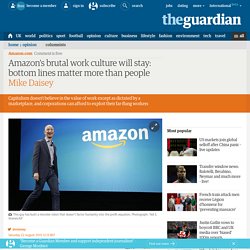

“O sistema chegou à perfeição, com o trabalhador forçado a se explorar”. Entrevista com Ken Loach. As 7 Marcas de Chocolate que Utilizam Trabalho Escravo Infantil. A Servidão Moderna. Slavery By Consent: Understanding The Human Farm. Time to Unslave Humanity: Ethos [Full Movie] Consumerism and Financial Debt = Slavery! 10 Ways To Stop Being A Slave And Bring Down The Pyramids Of Control. Source: www.activistpost.com | Original Post Date: May 24, 2012 – There are very real conspiracies in the world, and those conspiracies are always conducted by people “in the know” against those who are ignorant or naive of back-room machinations.

Past slavery was largely based on force (thus was much more obvious), but modern-day slavery is actually more widespread because global slave masters use all of the scientific tools at their disposal to win hearts and control minds, convincing us that our hands and feet are free, so we must be living self-directed lives. There are signs that the mind-pyramids that technocrats have built to enforce their 21st-century global plantation slave system are crumbling as they press harder upon our cognitive ability to make sense of words and actions. The owners of the shoulders on which the structure of tyranny is supported are beginning to leave in droves. Here are 10 ways that you can help collapse all of the pyramids of control. 1. 2. 3. 4. 5. 6.
Take A Reverse Tour Of The Global Gadget Supply Chain With These Stunning Photos. For three weeks last summer, the "nomadic design studio" Unknown Fields took a reverse tour of the global supply chain, riding a massive cargo ship from Vietnam to a shipyard in Shanghai, visiting a Christmas decoration factory in China, and exploring a mine in inner Mongolia.

Together with a group of filmmakers, journalists, scientists, and artists, they documented each step of the journey of a typical tech gadget made in China. Here's a stunning time-lapse video, from filmmaker Toby Smith, of the two days they spent on a cargo ship. "The work we are making is really an elaborate portrait of a city," says writer and educator Kate Davies, who co-founded Unknown Fields with artist and architect Liam Young in London. "Global supply chains touch everything around us. The scale of each part of the supply chain amazed the designers. China's shipyards were similarly massive. Amazon's brutal work culture will stay: bottom lines matter more than people. Like a clone army of Captain Renaults, the world woke up last weekend to the astounding New York Times story that Amazon’s workplace was brutish, nasty and cultish.

And like that unforgettable character in Casablanca, the world was “shocked – shocked!” To discover there was ugliness in the machinery of such a tech darling. The analogy is particularly apt because the crux of the scene is that Renault, a moment after blandly asserting he’s shocked by gambling, is handed his winnings. Many of the same media outlets telling this story of Amazon’s bad behavior have similarly lionized Jeff Bezos and Amazon for decades. This pretending to be surprised is convenient and ridiculous.
Inside Amazon: Wrestling Big Ideas in a Bruising Workplace. Many women at Amazon attribute its gender gap — unlike Facebook, Google or Walmart, it does not currently have a single woman on its top leadership team — to its competition-and-elimination system. Several former high-level female executives, and other women participating in a recent internal Amazon online discussion that was shared with The New York Times, said they believed that some of the leadership principles worked to their disadvantage. They said they could lose out in promotions because of intangible criteria like “earn trust” (principle No. 10) or the emphasis on disagreeing with colleagues.
Being too forceful, they said, can be particularly hazardous for women in the workplace. Animated_interactive_of_the_history_of_the_atlantic_slave_trade. Source: slavevoyages.org For the full interactive version, use a larger device.

Interactive by Andrew Kahn. Background image by Tim Jones. Usually, when we say “American slavery” or the “American slave trade,” we mean the American colonies or, later, the United States. But as we discussed in Episode 2 of Slate’s History of American Slavery Academy, relative to the entire slave trade, North America was a bit player. Cómo enseñar a los niños a pensar. El filósofo Robert Swartz propone un cambio radical en la actual escuela «que mata las ganas por aprender y pensar» ¿Cómo sería una sociedad llena de adultos que saben racionalizar sus ideas?

¿una sociedad repleta de gente que sabe pensar? Nacemos con la capacidad innata de pensar pero después no siempre se pone en práctica el pensamiento verdadero, es decir, aquél que te hace analizar las situaciones y establecer las consecuencias de los actos que acometemos en el día a día. Por eso, enseñar a pensar es básico desde la más tierna infancia, como defiende el filósofo Robert Swartz, que recientemente visitó Madrid y ofreció una conferencia en el Colegio Brains de Madrid. Embraer: sucesso, globalização e… ataque ao trabalho. [Este é o blog do site Outras Palavras em Carta Capital.

A pior profissão do mundo. Como o jornalismo empreendedor está decolando no Brasil. Quando o jornalista brasileiro Fernando Mello quis divulgar o lançamento do Brio, sua nova startup, no mês passado, ele fez o que a maioria dos jornalistas empreendedores faz.

Escreveu um post no Medium. "No momento em que o jornalismo passa por transformações e incertezas, nosso grupo de repórteres, editores, designers, desenvolvedores e engenheiros... lança um projeto que pretende ser uma janela de oportunidades", Fernando escreveu em um post no Medium (em inglês e português). O lançamento do Brio é um sinal dos tempos no jornalismo brasileiro: jornalistas brasileiros estabelecidos estão cada vez mais optando por lançar suas próprias startups de mídia. "Esse é o momento da minha vida para tentar fazer isso", disse Fernando, que já trabalhou na Folha de S.
Paulo, Playboy do Brasil e revista Veja.